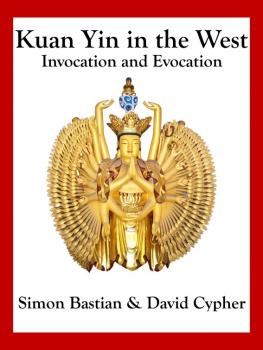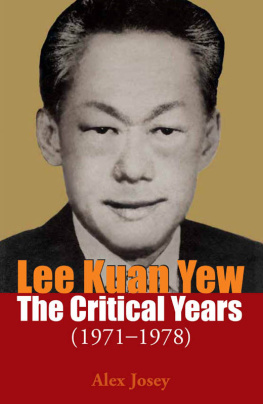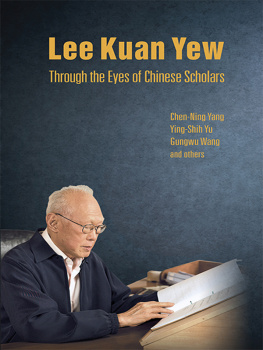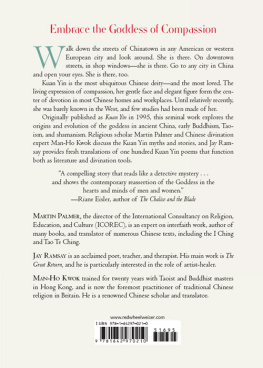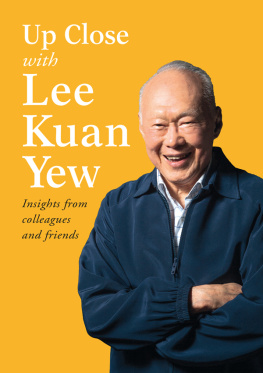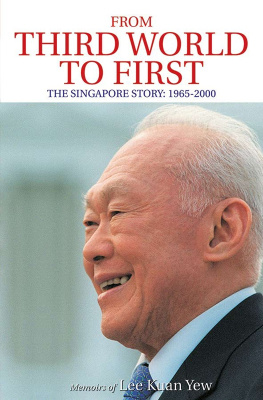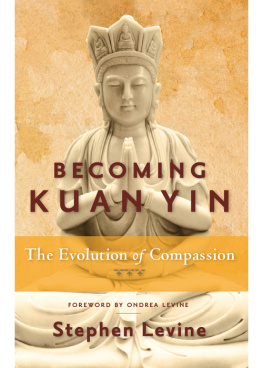KUAN YIN IN THEWEST
INVOCATION ANDEVOCATION
Copyright 2014Simon Bastian & David Cypher
Published byHadean Press
The Guides to theUnderworld Series
This ebook islicensed for your personal enjoyment only. This ebook may not bere-sold or given away to other people. If you would like to sharethis book with another person, please purchase an additional copyfor each recipient. If youre reading this book and did notpurchase it, or it was not purchased for your enjoyment only, thenplease return to your favourite retailer and purchase your owncopy. Thank you for respecting the hard work of the authors.
FOREWORD
The aim of thiswork is to examine and demonstrate how Kuan Yin fits into or isadopted by Western culture, both mundane and esoteric, and topropose that she has a vital importance for us currently.
Although mostpopularly associated with the virtue of compassion, the deityyields many other beneficial qualities and dimensions. She is ahigh grade entity.
Another aim isto dispel the image that is unfortunately being imposed upon her ofa warm and essentially anodyne New Age icon. Kuan Yin arises fromthe Void. We should not make the error of attributing humancharacteristics to her according to whim. Nevertheless, this veryemptiness at her heart is paradoxically the source of hervirtue.
ORIGIN
Kuan Yin is theBodhisattva associated with compassion by East Asian Buddhists andto the Taoists is an Immortal. The name is also rendered as KwanYin, Guanyin, Kannon or Kwannon to the Japanese, Kuan Im inThailand, Kwan Im in Indonesia and to the Koreans, Gwan-eum. Thereare several variations and differences in pronunciation.
Guanyin comesfrom Guanshiyin, interpreted as Observing the cries of the world.Originally a male, Avalokitesvara, which name appears as far backas the 5th century C.E. and is Sanskrit for He who looks down uponsound (the cries of the world). Therefore the Chinese Guanyin is adirect translation from the Sanskrit. The isvara ending has beenconnected to the Hindu notion of the creator god Siva.
Conversely, in Taoism: The Way of the Mystic (p.112),J.C.Cooper, who was brought up by Chinese amahs to understand bothTaoism and Buddhism, states that Kwan-yin developed Buddhistcharacteristics and was equated with Avalokitesvara later on.
The female formwas adopted in China around the 12th century C.E. Images ofAvalokitesvara usually present him dressed in Buddhist robes andseated, looking down to symbolise watching over the world.
As a youngwoman the presentation is generally in a white robe, the left handholding a jar of pure water and the right a willow branch, andwearing a crown. The water is sometimes interpreted as being tears,and a further association here is with salt water and the sea. Thewillow represents the yin or lunar principle and is used tosprinkle the waters of life.
Being a patronof seamen she is also portrayed carrying a fish basket. She iseither alone or accompanied by a white parrot, two children or twowarriors (General Guan Yu and the bodhisattva Skanda). Sometimesshe stands on a dragon.
The interchangebetween male and female has led to some viewing the deity asandrogynous. In the Lotus Sutra Avalokitesvara can take any form,male, female or non-human. As the doctrine of the Mahayana sutrasis that ultimate reality is emptiness, it might be said it does notreally matter what sex, if any, is attributed to Guanyin (althoughthis mutable quality will be discussed in more detail later).InTibetan Buddhism the female aspect of Avalokitesvara is Tara.
Presented asvowing to never rest until she had liberated all beings fromsamsara, her head split into 11 pieces from the effort. She wasthen given eleven heads by the buddha Amitabha to help her in hertask.
Similarly hegave her a thousand arms (this number can vary in differentaccounts ) to reach out to those in need.
Her other rolesinclude protector of women and children, and of the poor, disabledand ill. She is also a guardian of those at sea, and in this roleis sometimes interpreted as Mazu, the Taoist goddess of the sea.She is also associated with Tianhou the Empress of Heaven, Motherof All Things, standing for birth, death and rebirth.
After the GreatFlood she sent a dog out holding rice grains in its tail, and isthus seen as a goddess of agriculture, and she is also known as afertility goddess; a Chinese superstition is for a woman wishing tohave a child to offer a shoe to Kuan Yin (a borrowed shoe issometimes used; after the birth the shoe is returned along with anew pair as a gift to the owner). In this guise she is known asThe Child Sending Guanyin.
Kuan Yin isrevered in new religious movements of Asia, such as the I-Kuan Taosect of Taiwan, where she is known as The Ancient Buddha of theSouth Sea.
In the WestKuan-Yin has become popular as a result of the combined interest inBuddhism, feminism and goddess traditions.
TALES
Stories andparables featuring Kuan Yin derive from both Buddhist and Taoistsources. Here are the most well- known classics.
MIAOSHAN
Miaoshan was anincarnation of the Goddess as daughter of a king who wanted her tomarry a wealthy man she did not love. She agreed to the marriageonly if it would ease three misfortunes; the suffering of peopleaging, falling ill, and the suffering caused by death. When theking exclaimed that no one could ease such things, she replied adoctor could.
As punishmenthe forced her to work night and day in a temple, which she enduredwith the help of animals who were attracted by her pure nature.When the king tried to burn down the temple in frustration she putthe flames out with her bare hands, suffering no harm. Finally, heordered her to be executed.
In one versionshe is transported by a spirit-tiger to a hell-like realm which byher presence is transformed into a paradise. Another has herallowing herself to die only after the executioner has failed threetimes to kill her, his axe and sword shattering and arrows veeringaway from her. Realising he would be punished for his failure shelet herself be killed, taking on his karma and descending toHell.
Yama the rulersent her back to Earth before she ruined his realm by turning itinto a paradise.
In theconclusion to this story her father becomes ill and is told by amonk that the arm and eye of one who is without anger can cure him,which Miaoshan readily offers. When the king realises his owndaughter has made this sacrifice he begs her forgiveness and buildsa temple to her as she is transformed into Thousand Armed Guanyin.About to journey to heaven, she hears a cry for help and returns toEarth, vowing never to leave until all suffering has ended.
She stayed fora while on Mt. Putuo, an island where she helped sailors who werestranded and therefore became a patron of sailors and fishermen.(Her incarnation here incidentally indicates an ideal location forinvoking her; at high points such as hills on islands).
SHANCAI
Shancai(Sudhana in Sanskrit) was a disabled Indian boy who journeyed toMt. Putuo to learn the dharma. Kuan Yin decided to test his resolveand created an illusion of three pirates attacking her.Pretendingto try to escape from them, she ran to the edge of a cliff withShancai painfully following in order to try to help, and then shejumped off. Shancai still came after her, climbing over the cliffedge but falling. He was saved in midair by Kuan Yin who healed himand taught him the dharma as reward for his devotion.

